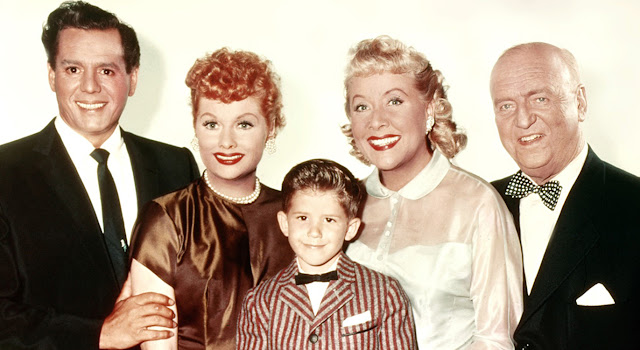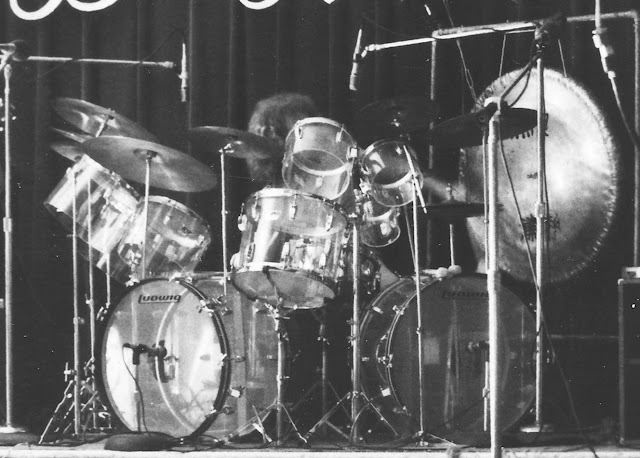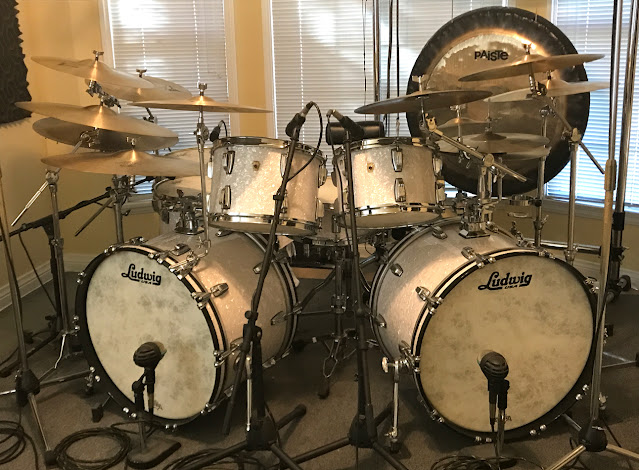My Drumsets, Part 2: "Expand-O-Kent" Drumset (1969 – 1973)
“Expand-O-Kent” drumset (1969 – 1973): Combination of E.W.Kent and Ludwig drums
Added in 1969:
• E.W.Kent 22" x 14" bass drum (black-diamond pearl wrap)
• 20" A Zildjian Medium Ride cymbal; 14" A Zildjian Hi-Hat cymbals
New drumset configuration: Two bass drums, small tom, floor tom, snare drum
I spent 1968 going to high school, practicing drums, attending rock concerts and becoming a desciple of CREAM's drummer, Ginger Baker. When my friend Mark and I saw CREAM play live for the first time in March of 1968 I remember Baker's drumset configuration of two bass drums, two small toms, two floor toms and a snare drum impacting me almost as much as when I had fallen in love with Keith Thibodeaux's 4-piece drumset eight years earlier (see Blame It All On Little Ricky: How I Became A Drummer).
I also spent 1968 working at my first part-time after-school job as a soda jerk at the local Baskin-Robbins 31 Flavors ice cream parlor. In addition to being an absolute blast (I got to work alongside my friends Mark and Terry, as well as a bunch of other memorable characters), working at B&R gave me the first disposable income I'd ever had in my life. And of course, what else would someone in the middle of becoming A Drummer do with disposable income but dispose of it on drums?
Taking a cue from Ginger Baker's setup, early in 1969 I added a second E.W.Kent black-diamond pearl bass drum to my drumset. I got a 22”-diameter bass drum to go with my existing 20”-diameter bass drum because those were the bass drum sizes that Baker used at the time. (Of course I did!) However, this size mismatch immediately created problems for me, because even when they are tuned to the same pitch, 22”-diameter and 20”-diameter drums don’t sound the same — behind that same pitch the 22” drum has a fuller, deeper resonance. After struggling with this difference (and never finding a satisfactory solution for it) I vowed that all my future drumsets would contain identically-sized bass drums. I immediately began incorporating double bass-drum patterns into my playing (and paying a lot more attention to Louis Bellson — original developer of the two bass-drum drumset configuration — whenever he appeared on TV.)
I played this 5-drum configuration through my last two years of high school (in my band The Jazz Nativity, the first band I was in that played nothing but original material or original arrangements of songs written by others), and when I first began studying music at college.
Around this time I also added a 20" A Zildjian Medium Ride cymbal (I moved my pawn-shop Zildjian Crash-Ride to the cymbal holder that was attached to my new bass drum and used it as a crash cymbal) and finally replaced the wretched Zyn hi-hat cymbals that came with the kit when I originally bought it from Terry with a pair of 14" A Zildjian Hi-Hat cymbals. These new ride and hi-hat cymbals were top-of-the-line professional-quality instruments, and provided a range of sounds that previously had not been available to me. Now the only part of my drumset that wasn't up to snuff was my E.W.Kent snare drum...
Added in 1970:
• Ludwig 14" x 5" Super-Sensitive snare drum (chrome-plated aluminum shell)
• 18" A Zildjian Thin Crash cymbal; 6" A Zildjian Paper-Thin Splash cymbal
When I began studying music at L.A. Valley College in 1970 the school had a first-rate music department with excellent teachers and good equipment. I studied music theory/composition, keyboard performance, sight-singing, music notation, and was a member of the college's symphony orchestra and the marching band. I soon found a used top-of-the-line Ludwig Super-Sensitive snare drum in superb condition that was being sold by another student. Although the Super-Sensitive model was primarily intended for use in symphony orchestras, its sound and playability were such a huge improvement over my old E.W.Kent snare that I wasn't the least bit concerned that it might not be ideal for playing in loud bands. (Not long after starting at Valley I formed the short-lived Gunga Duck, a minimally-amplified band with a 3-piece horn section, similar to Chicago.)
I also replaced my pawn-shop 18" crash-ride with what was for me, the perfect 18” thin crash cymbal: it spoke with a deep, full voice and had just the right amount of attack and sparkle; it was forceful, but after it was struck its sound decayed quickly and got out of the way. I really loved that cymbal. I also added a 6" paper-thin splash alongside my 8" splash after seeing Buddy Rich using a 6" splash.
Added in 1971:
• Ludwig 16" x 16" floor tom (blue-sparkle pearl wrap)
• Ludwig 13" x 9" small tom shell (mahogany lacquer finish)
• 20" A Zildjian Swish cymbal; Rogers and Slingerland cymbal stands
New drumset configuration: Two bass drums, two tom-toms, two floor toms, snare drum
After several months I continued expanding my drumset's configuration by adding a second floor tom, a used Ludwig 16"x16" with a blue-sparkle wrap. In an attempt to get the kit to match (and still hating the black-diamond pearl wrap worn by all my E.W.Kent drums) I used spray cans to paint all the drums (except the chrome snare drum) gloss black. However this wound up looking cheap and the extra thickness of the paint made it difficult to install drumheads (especially on the used Ludwig floor tom, which had a slightly-oversized shell). So I stripped off the pearl wraps from all the drums and arranged for Terry's artist girlfriend (Sheila) to hand-paint the entire drumset in psychedelic designs. (Remember, we were barely out of the '60s.)
Sheila wanted to start painting with the smallest drum, so while she painted my 12" tom-tom I found a used Ludwig 13" x 9" small-tom shell (sans hardware). I removed the lugs from my decommissioned E.W.Kent snare drum, bought hoops, tension rods and drum heads and built myself a second tom-tom that would match my 12" small tom. When Sheila finished painting the 12" small tom (it turned out amazing — see photos below) I gave her the 13" small tom and when she had finished painting that one (also amazing) she painted the Ludwig floor tom. The floor tom turned out equally amazing, but by this time Sheila had tired of the project and left me to fend for myself when it came to getting my other three drums (two bass drums and the E.W.Kent floor tom) painted.
snare drum.
Above: Recent close-up photos of the 12" tom-tom, showing details of the superb psychedelic paint job by artist Sheila Klein.
I wound up having the other three drums completed by three different artists. Fortunately, the departing singer in my new progressive-rock band (New World Music Society, another not-bad band name!) was a very talented artist, and his paint job on my 22" bass drum shows an irreverent attitude and wicked sense of humor not present on any of the other drums. (He paid tribute to each band member's, um...member on the underside of the drum, which wouldn't be visible when the drums were set up.)
During this period I also added a 20" swish cymbal to my growing bronze arsenal, along with a couple of sturdy stands that allowed me to stack my Paiste Standard crash above my ride cymbal, and my no-name Italian crash cymbal above my new Swish.
Added in 1972:
• 34" Paiste symphonic gong
• 18" A Zildjian Thin Crash cymbal; 16" A Zildjian Medium-Thin Crash cymbal
Before I headed out of L.A. with my (now highly-amplified) progressive-rock band in June of 1972 I found a
used 34” Paiste symphonic gong at Professional Drum Shop. (At that time no
self-respecting progressive-rock band would dare set foot on stage without
having a gong prominently displayed.) Pro Drum Shop had been renting this gong
out for use at recording studios and film scoring stages. An arrow pointing to
an 8” diameter circle had been drawn on it in Magic Marker, along with the
words: “HIT HERE”. People definitely had been hitting it there, as the gong had
a noticeable dent within that marked 8” circle.
Perhaps as a going-away gift, Mom gave me the money to buy
that gong (thanks, Mom!). I built a stand for it out of steel plumbing pipes,
cleaned-off the front, sprayed on a coat of clear lacquer and painted on
Japanese characters that meant “Infinite” and “Silence” (at the time the band’s
name was Infinite Silence. I know, lame…).
My "perfect" 18" crash cymbal had been stolen in early 1972, so I had to replace it with another (not-quite-so-perfect) one,* and I completed my Zildjian cymbal setup by adding a 16" Zildjian Medium-Thin Crash:
• 20” ride
• 18” & 16” crashes
• 14” hi-hats
• 8” & 6” splashes
• 20” swish














Comments
Post a Comment